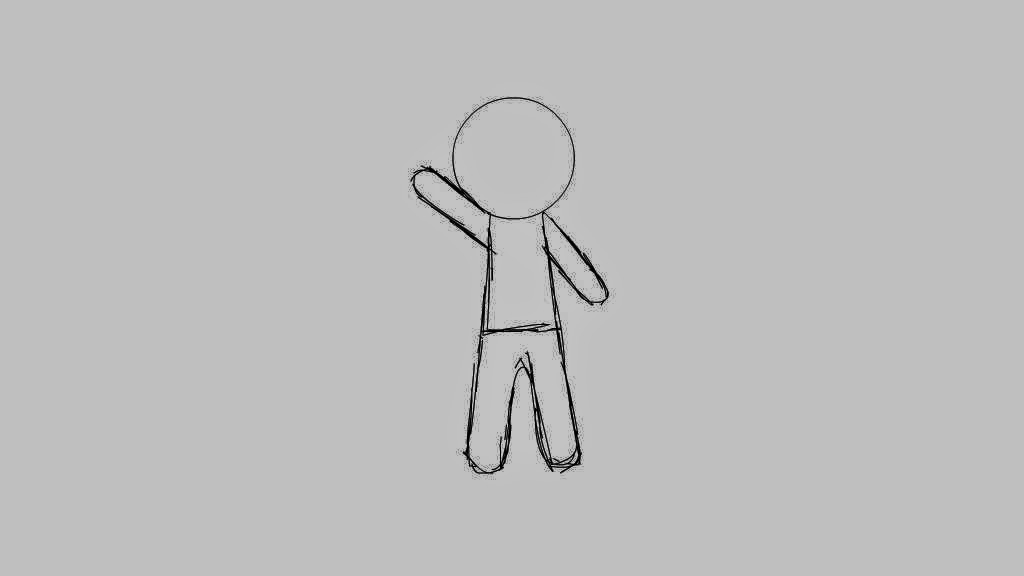To recap, the aim of the project was to choose a theme relating to 'Change of State' and produce an animation to answer our chosen theme. I chose the theme 'Human to superhero'.
First, I will review the process I went through to produce my final animation. In terms of efficiency and management of workload, I feel that it was a success. I produced the animation in five distinct stages; keys, rough animation, details, colours and effects. I feel that I managed each of these stages in a controlled and efficient manner. One aspect that kept things going smoothly was my decision to incorporate the soundtrack from the offset, so I never lost track of what I was supposed to be animating.
 |
| Stage 1: Animation Keys |
Now, I will analyse my character designs and animation style. I designed characters that are straightforward, but have a lot of potential for facial and physical expression. The use of bold lines and simple shapes allowed for characters that are both easy for the audience to relate to and easy for me to animate.
 |
| Stage 2: Rough Animation |
In order to better manage my workload, I also made use of limited animation. This decision came as a result of the previous Animated Cycle brief, in which I insisted on drawing every frame by hand. This was not only laborious; it took a lot of time. Time is money in the animation industry, and though I managed to submit it on time, I might have lost a lot of money if it had been a professional submission turned in late. By using limited animation in this brief, I was able to finish the piece an entire week before it was due for submission.
 |
| Stage 3: Details |
As well as lightening the workload by a significant amount, my decision to use limited animation allowed me to focus on the silhouettes of the characters and make sure that their poses and body language were dynamic. The use of flat colours also keeps the animation clean and uncluttered, which allows for clear communication, an essential thing to consider when animating.
 |
| Stage 4: Colours |
This project was also a learning experience for me, as it was the first time I had experimented with filters and graphic symbols of multiple frames. I had a lot of trouble with getting the glow filters to look right, and it took a lot of trial and error. As stated in a previous post, I achieved the final result completely by accident, but the information I gained from this happy accident will serve me well in later projects.
 |
| Stage 5: Effects |
Now I will look at how the soundtrack and the animation compliment each other. I was originally going to use a different piece of music, but I changed my mind because the music I used was the perfect length for the animation and suited the subject matter much better (I was even told that the music I used perfectly suits a superhero). The dynamic, over-the-top nature of the music also works with the dynamic, over-the-top nature of my characters' movements. By working out the animation keys in conjunction with the music, the action was solidly grounded, and it also made animating easier.
 |
| The final result is one I am incredibly pleased with |
The overall look and feel I was going for, in terms of design and animation, was that of a television cartoon for children. Based on feedback I received throughout the project, I neatly managed to achieve this, which I am pleased about. As far as I know, there is a lot of work in children's entertainment, and if I can develop my skills in that sort of area, I should stand a good chance of getting a job in the animation industry.
Overall, I believe that this project was a resounding success. I learned a lot of new skills and techniques for animating in Adobe Flash while correcting the mistakes I made in the previous animation project. In the group critique of our finished animations, the tutor found nothing wrong with my submission. As well as learning a lot about Adobe Flash, I also learned a lot about myself as an animator. It seems that my strengths lay in limited animation; it would do me a great service to try and break this personal boundary, but for now, further strengthening my grasp of limited animation will serve me well.







































